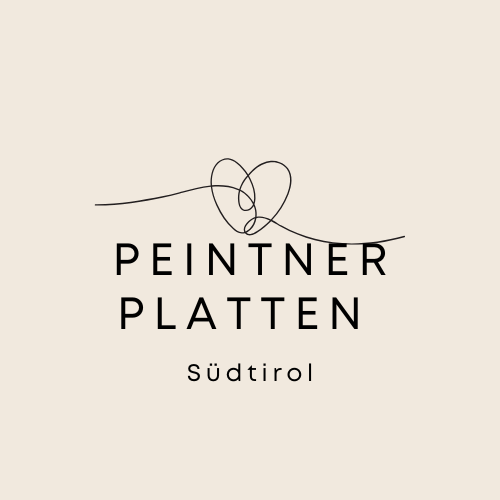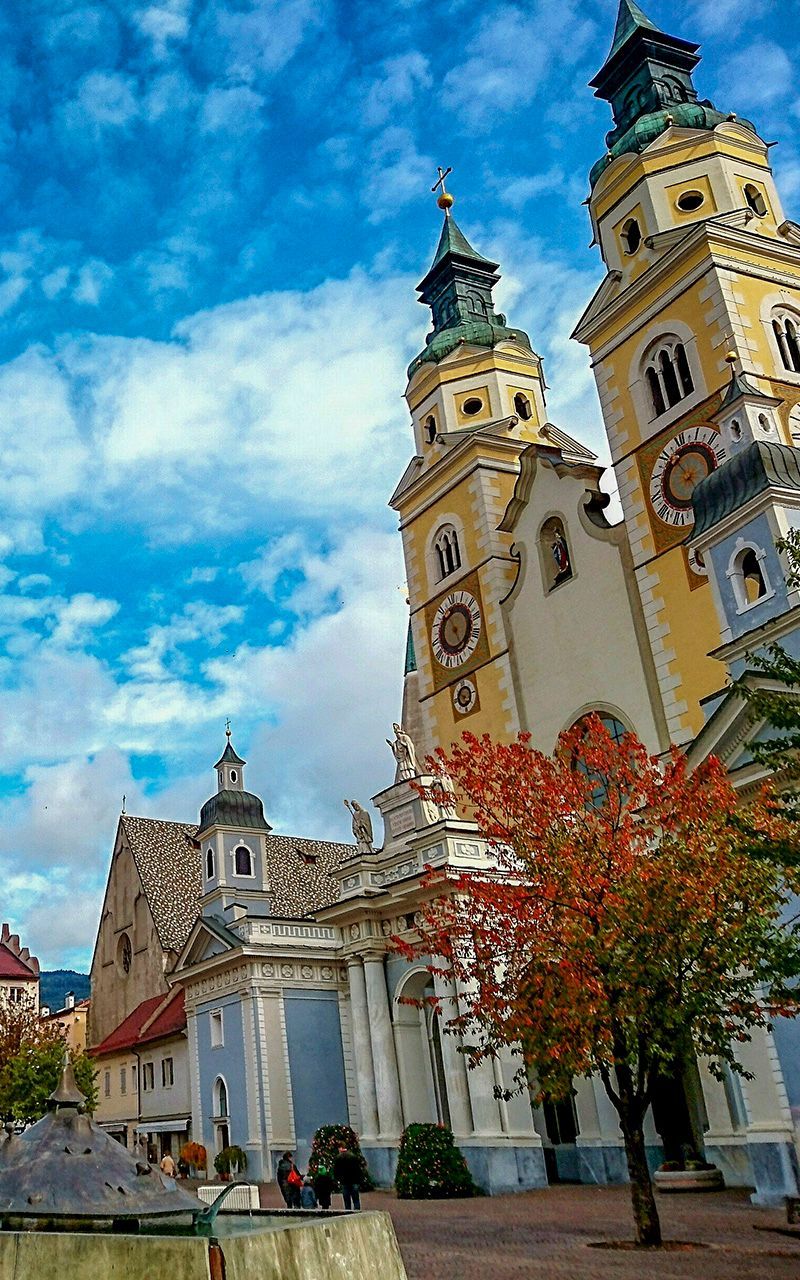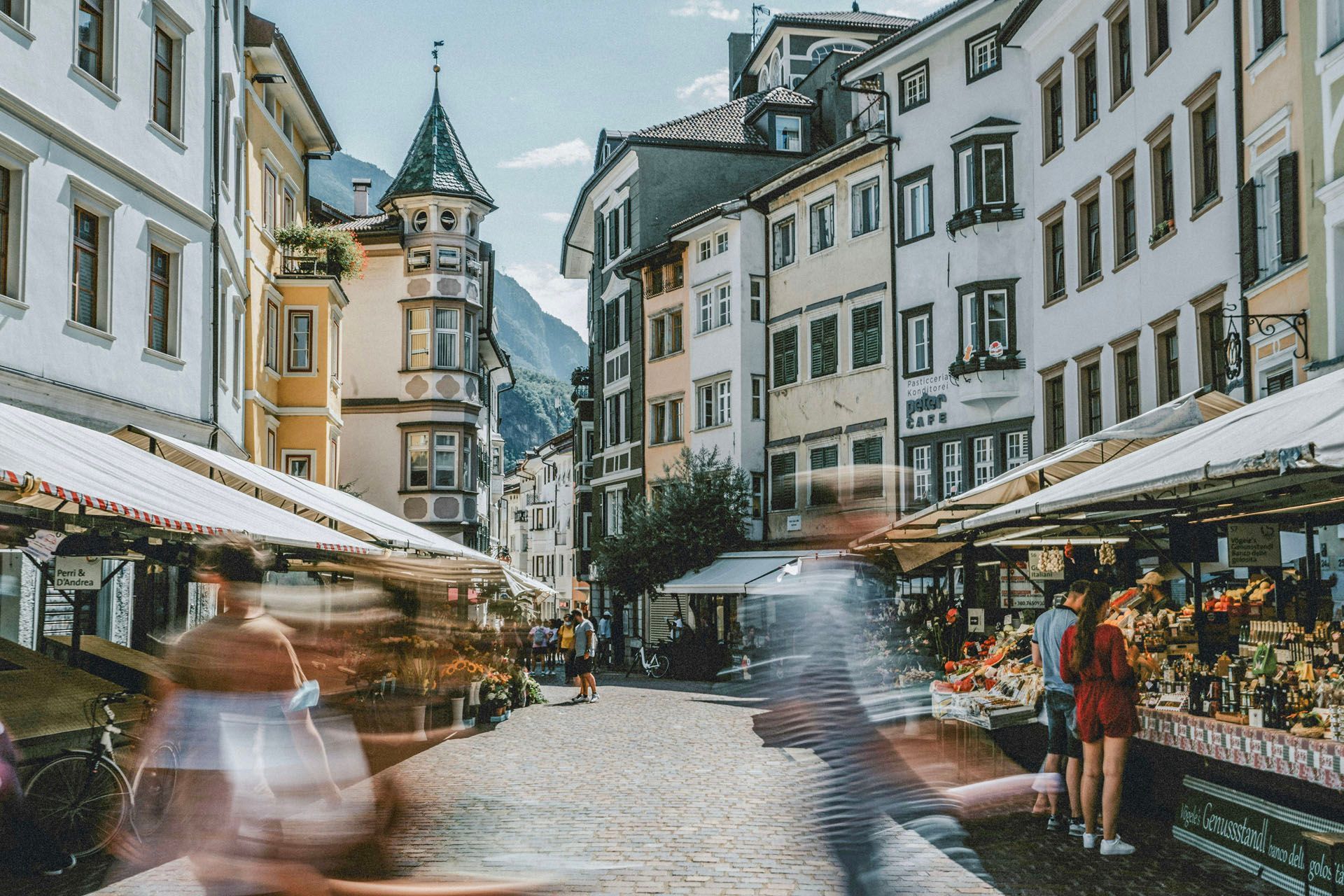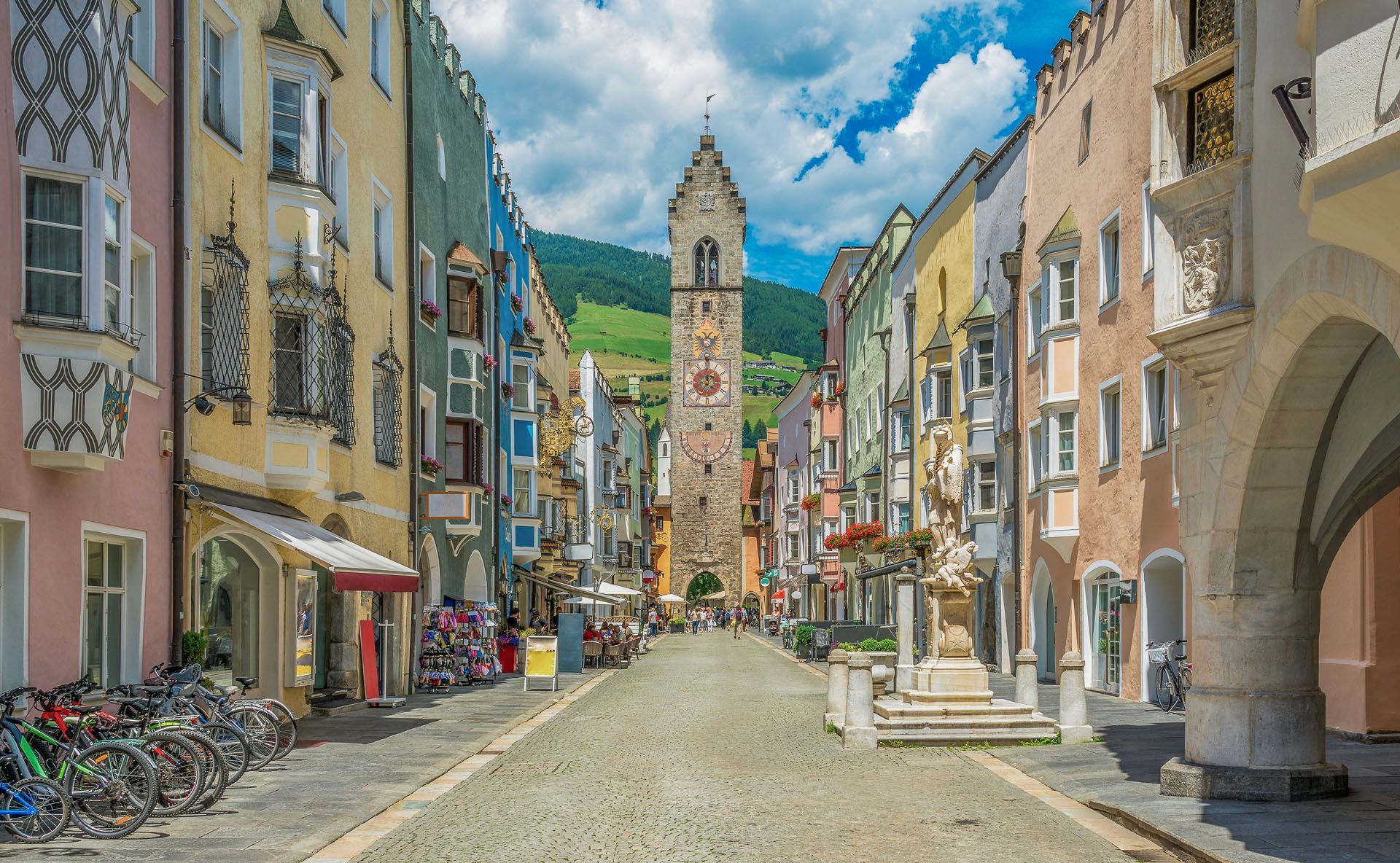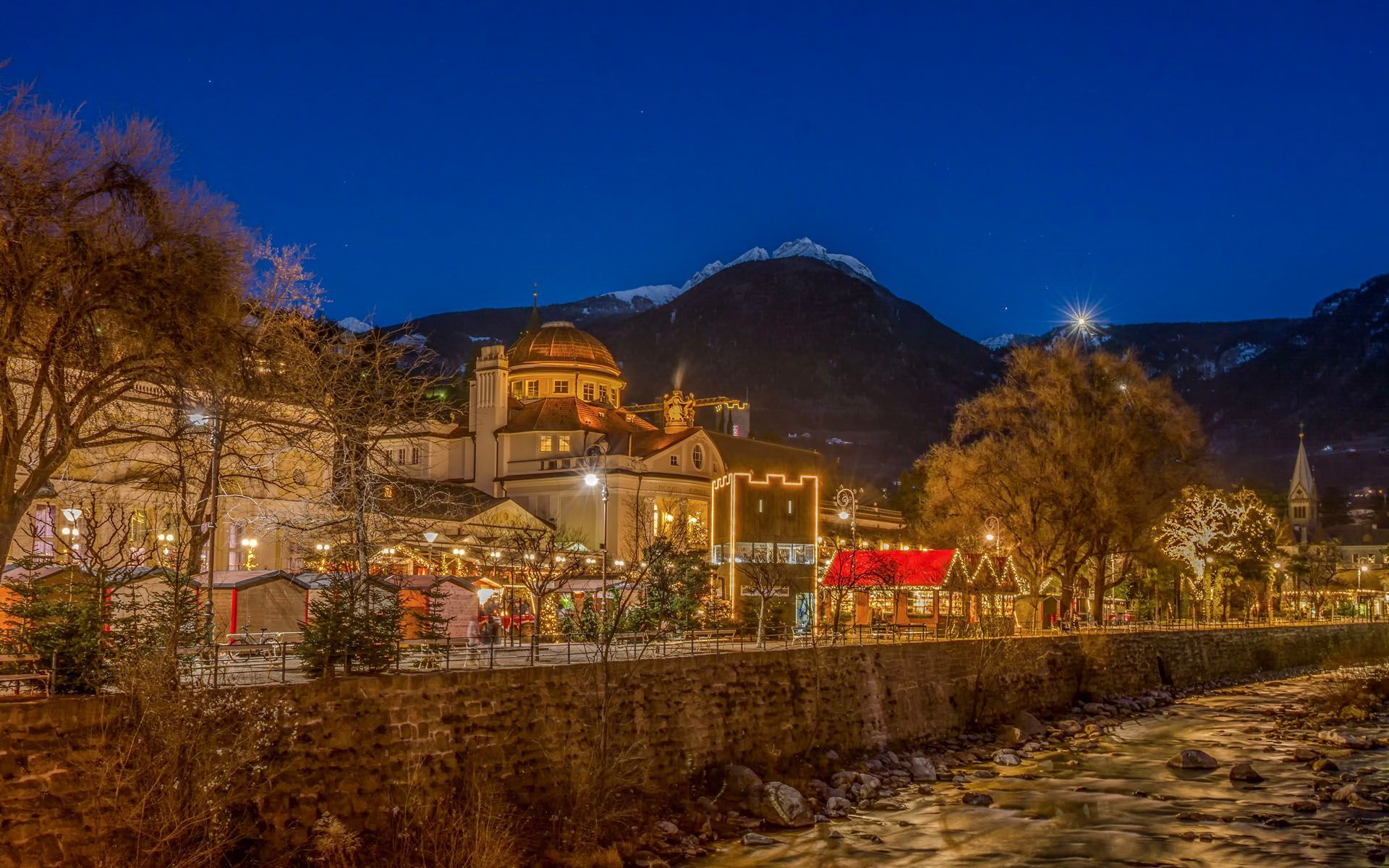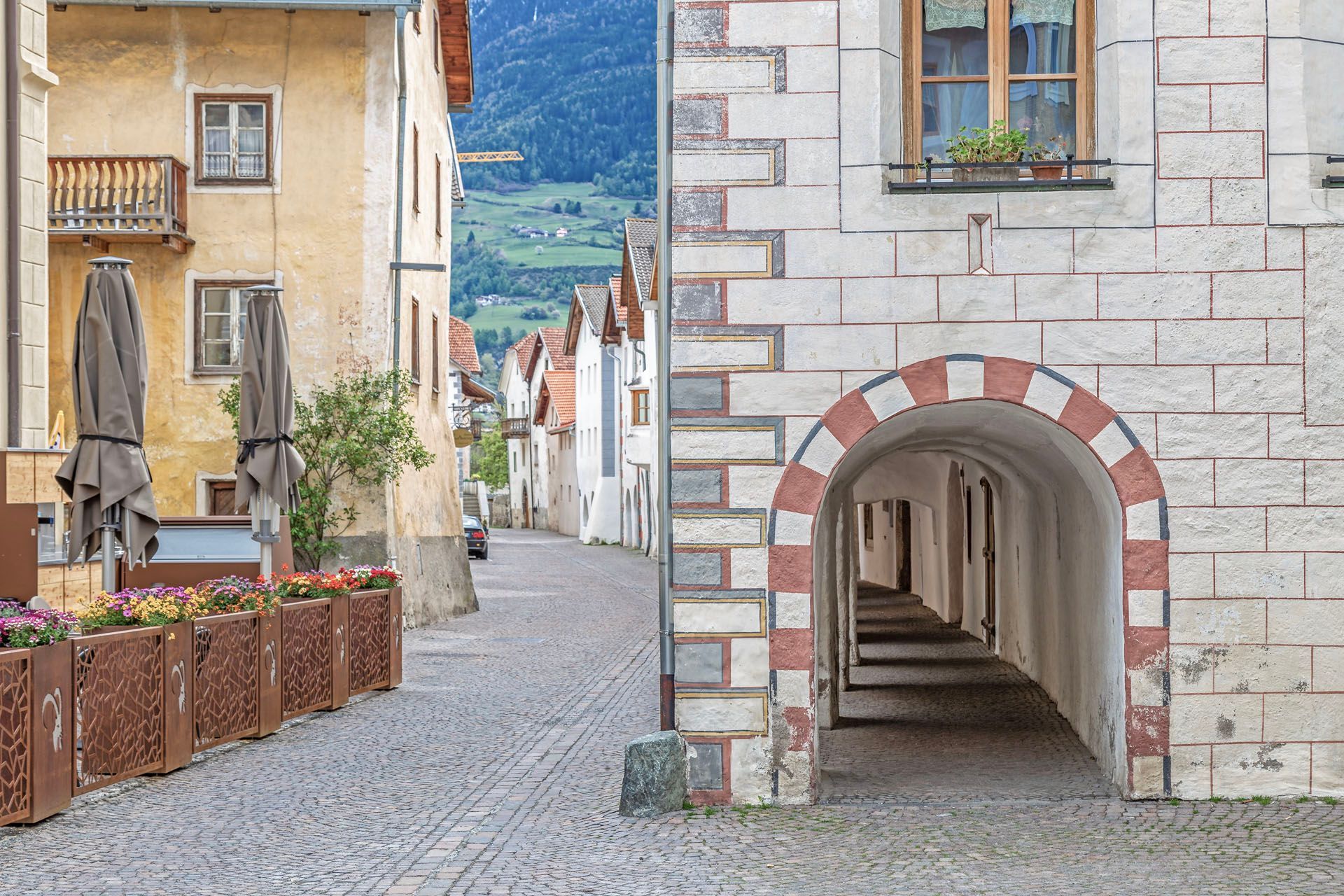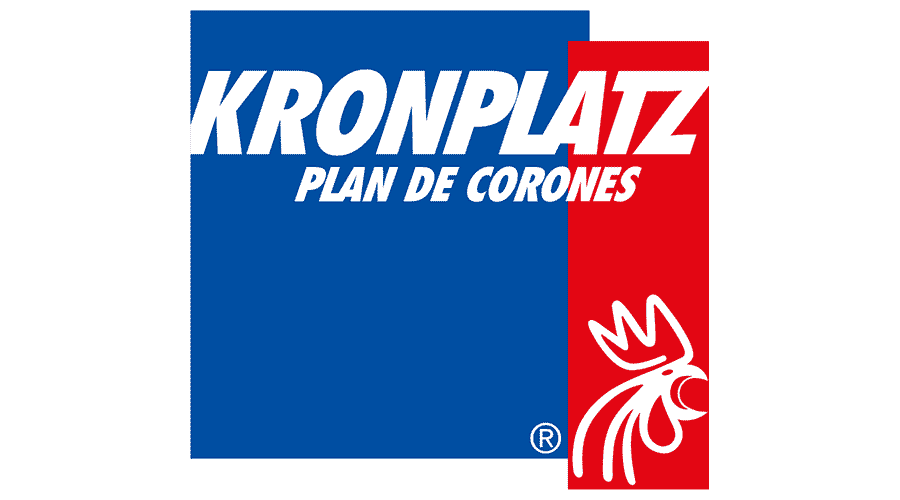South Tyrol's cities
Bruneck
The main town in the Pustertal is Bruneck. Around 15,000 inhabitants, located at the foot of the famous Kronplatz and the gateway to the Tauferer Ahrntal. First there was the castle. It was built around 1250. The town then grew at the foot of the former episcopal residence. Today the castle is home to one of Reinhold Messner's famous museums, the MMM Bergvolk. Bruneck's greatest son is probably Michael Pacher, the painter and sculptor whose late Gothic works achieved world fame.
Four city gates are still preserved in the city. They lead into the famous city street, which presents itself like an open-air shopping center with its diverse options. Bruneck is not lacking in flair and charm, as the lovingly renovated town houses on the Paradegasse in the center of the city ensure. The people of Bruneck do not let their coffee breaks be taken away from them, nor do they change their shop opening hours. The shops are closed from twelve to three, and the South Tyrolean tradition is also preserved in Bruneck.
The Christmas market in December, the Stegen market in October and numerous events make Bruneck worth living in and loving.
Brixen
Brixen's roots go back over a millennium and form the pulsating heart of this episcopal and cathedral city, which is now home to around 20,000 people. As one of the oldest cities in Tyrol, Brixen nevertheless exudes a modern vibrancy, which is undoubtedly also thanks to its numerous students. They study at the faculty of the University of Bozen, a branch of the venerable University of Padua, and at the theological college.
In the center of the city is the impressive cathedral square with its baroque cathedral and the historic Gothic cloister - a place of great cultural and historical importance. But the real magnet for visitors is the old town: its medieval arcades invite you to stroll and linger with a variety of shops, restaurants, bars and cafés. Here, where quiet tranquility combines with a lively city atmosphere, the special charm of Brixen is revealed. Many who have visited the town agree: it is the most beautiful city in South Tyrol. An absolute must is the Neustift monastery, a place that touches the soul.
The annual calendar is full of highlights such as the Christmas market, numerous concerts and city festivals, as well as the delicious bread and strudel market in October, which only underline the charm and liveliness of this city.
Bolzano
Perhaps nowhere else in South Tyrol is it so clear that two language groups and two completely different cultures come together in the small country on the Etsch and Eisack rivers. Today, just over 100,000 people live in the state capital, making up around a third of the total population. During the Fascist era - the south of Tyrol was unceremoniously awarded to the "victorious power" Italy after the First World War - Bolzano was massively Italianized and industrialized. The Italian language group makes up 73 percent of the population in Bolzano. Today, Bolzano is the capital of the "Autonomous Province of Bolzano South Tyrol". South Tyrol enjoys a special status in Italy, with special rights and extensive independence.
The fruit market, the arcades, Waltherplatz and the cathedral are certainly the most famous places in Bolzano. The "Museion", a museum for modern and contemporary art, a trilingual university and the research center of the European Academy, as well as the Ötzi Museum, embody modernity in the traditional city. The old relics of fascism in the Victory Square, the courthouse and the facade of the finance building again caused considerable discussion in 2011.
Bolzano also attracts thousands of visitors every year with its Christmas market. Film festivals, cultural festivals, dance summer, jazz festival and many other events also make Bolzano the cultural capital of the country.
Sterzing
Anyone visiting South Tyrol will certainly end up in Sterzing at some point. You pass the traditional Fugger town when you drive up to the Brenner Pass or come down from there. The roads from the Jaufen Pass and the Penserjoch practically lead to Sterzing. Silver mining once brought Sterzing prosperity and magnificent patrician houses. They are still being restored and maintained to this day so that they continue to give the old town its unmistakable character. The "Twelve Tower" is the unmistakable landmark of Sterzing. The historic town hall is worth seeing. It is one of the most beautiful in South Tyrol. A pleasant strolling atmosphere, nice restaurants and plenty of coziness make Sterzing a lovely little town.
The Sterzing Easter Games, the Yoghurt Days in July, the Dumpling Festival in September and the Christmas Market at Christmas are among the event highlights.
Not far from Sterzing: the mining tunnel in Ridnaun, the impressive marble gorge of the Gilfenklamm and the hunting and fishing museum in Wolfsthurn Castle near Mareit.
Merano
Opinions sometimes differ on Merano. And the impressions are certainly different. Almost above the rooftops of the city are the snow-covered peaks of the three-thousand-meter peaks and down in the city there is a Mediterranean climate, magnificent street cafes, palm trees and a sea of flowers. Hotels that resemble palaces and a certain grandeur that sometimes seems out of place in down-to-earth South Tyrol. This may be because Merano, with its 36,000 inhabitants, is a spa town and was already a tourist stronghold for the Habsburgs. Empress Sissi of Austria visited Merano several times. Doctors, artists, scientists - Merano has always been a special place.
However, none of this detracted from the charm. The Passer promenade, the Tappeinerweg, the Merano thermal baths by Matteo Thun, and of course the world-famous gardens of Trautmannsdorf Castle, the Museum of the History of Tourism and the Evelyn Ortner Women's Museum are today the flagships of Merano. Not far away is Tirol Castle and the gnarled mountain farms in the Ulten Valley.
Every two years in spring there is the flower show, then the music weeks always in September and the WineFestival with culinary delights in November.
Glurn
The smallest town in South Tyrol is called Glurns and is located in the rear Vinschgau, almost at the other end of South Tyrol. Unique - that sums it up in one word. The website of the medieval town reads: "Glurns enchants all visitors with its charming, medieval flair, the completely preserved ring walls and the three picturesque gate towers." Barely changed since the 16th century, the eventful history of the former trading town can be felt in every corner. The romantic character, the rich cultural life and the idyllic surroundings make Glurns a unique alpine jewel. That sounds like an invitation to visit this beautiful, almost tiny town. You will be left with magical impressions once you have experienced one of the historical festivals, the impressive events and the cultural highlights.
The famous artist and draftsman Paul Flora was born in Glurns, and although he left the town with his parents as a child, he remained connected to Glurns throughout his life and finally found his final resting place there.
